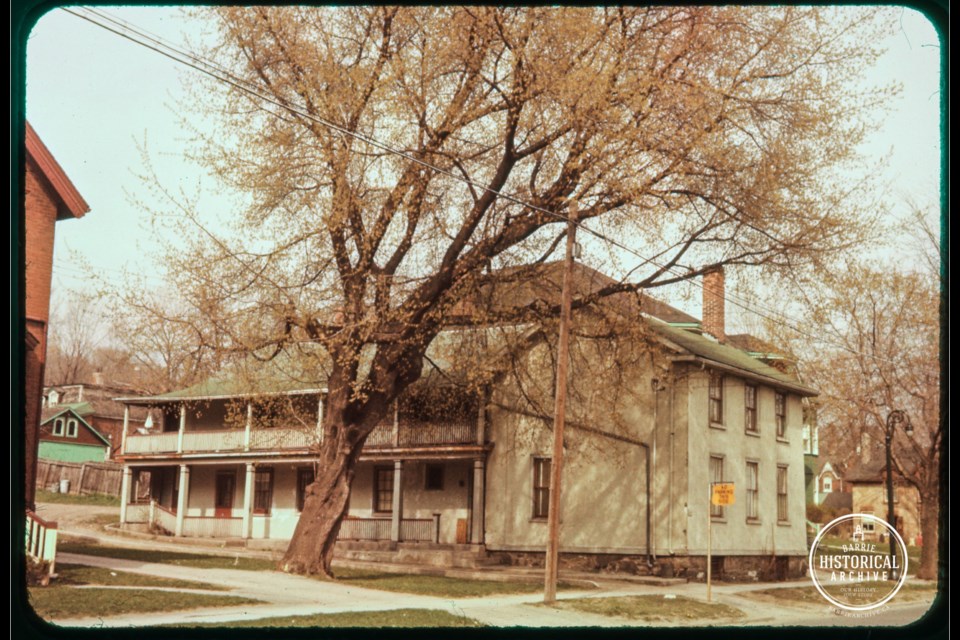This ongoing series from Barrie Historical Archive curator Deb Exel shows old photos from the collection and one from the present day, as well as the story behind them.
184 Dunlop St. E.
Many Barrie residents remember the tannery on Bradford Street. Its smokestack was part of our skyline for a long time. But it wasn’t the first tannery in Barrie.
In 1850, Andrew Graham, Barrie’s first tanner, built a tannery on the waterfront, just east of Poyntz Street, called the Lake Simcoe Tannery. Graham’s tannery — later called the Kempenfeldt Tannery — converted skins and hides into various types of leather. He had no competition until 1858 when the Yorkshire Tannery began offering leathers to shoemakers.
Graham’s operations grew and thrived. The tannery was blessed with an endless supply of water from a spring at the back of the building. It was upgraded about 1860 with a 10-horsepower steam engine and new mechanical systems, allowing Graham to improve the end-to-end process by using rail cars and pumps for carrying tan bark and liquors instead of conveyors.
On a roll, in 1864 Graham’s tannery expanded to include a steam-operated wool carding factory and within a year, a four-storey factory was booming. Wool was being carded, spun and woven, and flax was being processed. Knitting machines were added later for the production of cloth, flannel and blankets.
Across the road, at 184 Dunlop St., was Graham’s roughcast plaster house and attached two-storey store. Built in the late 1830s or early 1840s, the ground floor housed the shoe, boot and grocery store, an office and a storeroom, while upstairs was a shoe and boot factory.
Unfortunately for Graham, Andrew McKay opened a woolen mill over on Bradford Street and his monopoly ended.
The bad times continued when, because of a mortgage default, Graham was forced to sell his tannery, woolen mill and properties on Collier and Dunlop streets at public auction. The tannery changed hands a couple of times before the Park and Peckham Company of Newmarket bought the business and incorporated it in 1892 as the Barrie Tannery Company.
In 1894, Alexander and John Sinclair of Port Hope, took over the management of the tannery and, in time, controlling interest.
The Barrie Tanning Company was growing again. In 1900, they were looking to build an enormous new factory on Bradford Street with four times the capacity of the current operation. Before the new plant was constructed, a fire destroyed the existing tannery on Dunlop Street. The Underhill shoe factory was built on what remained of the tannery foundation.
Although Graham’s tannery and its successor are long gone, his 180-plus year old home still stands at 184 Dunlop St. E.



